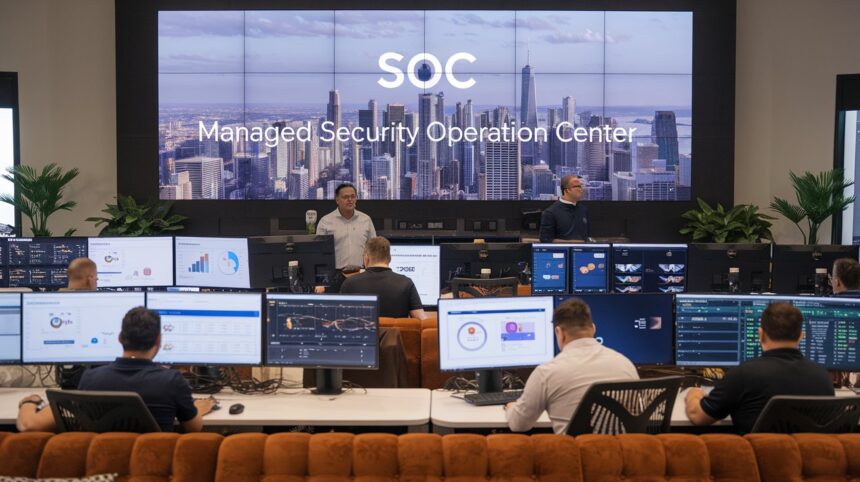As cyber threats grow more sophisticated, traditional security measures often fall short in detecting and mitigating complex attacks. With businesses relying heavily on digital infrastructure, protecting sensitive data and ensuring the integrity of systems has never been more critical. A Managed Security Operations Center (Managed SOC) offers advanced threat detection that goes beyond basic defenses, ensuring that organizations are equipped to identify, analyze, and respond to cyber threats in real time.
The Evolution of Cyber Threats
The cybersecurity landscape is constantly changing, with new attack vectors emerging as technology advances. In the past, perimeter defenses like firewalls and antivirus software were sufficient to block most threats. However, modern attacks are more intricate, leveraging techniques such as social engineering, ransomware, zero-day exploits, and insider threats to bypass traditional security measures.
Today’s attackers use highly targeted strategies, often launching persistent campaigns designed to infiltrate networks over time. The need for advanced threat detection has never been more apparent, as cybercriminals continually adapt their methods to evade detection. A Managed SOC provides the expertise and technology necessary to keep pace with these evolving threats, offering a higher level of protection than basic security tools can provide.
How Advanced Threat Detection Works
A Managed Security Operations Center utilizes advanced threat detection tools and techniques to monitor networks for signs of malicious activity. These tools include:
- Security Information and Event Management (SIEM) Systems: SIEM solutions gather and analyze log data from across an organization’s entire network. By aggregating data from firewalls, servers, endpoints, and cloud environments, SIEM systems provide a centralized view of all activity, allowing SOC analysts to detect patterns and correlations that may indicate a threat.
- Behavioral Analytics: Instead of relying solely on signature-based detection (which identifies known malware), a Managed SOC uses behavioral analytics to monitor user and system behavior. By establishing baselines of normal activity, SOC teams can quickly spot deviations that may indicate a compromised system or malicious insider.
- Threat Intelligence: A Managed SOC continuously gathers and analyzes threat intelligence from various sources, including global cyber threat databases and dark web monitoring. This information helps SOC analysts identify new vulnerabilities and anticipate potential attack vectors before they can be exploited.
- Machine Learning and AI: Artificial intelligence and machine learning play a crucial role in advanced threat detection. These technologies enable SOCs to automate the analysis of vast amounts of security data, identifying anomalies or patterns that could signal a cyber threat. AI-driven tools can learn from historical data, improving their detection accuracy over time.
Together, these technologies create a layered defense that enables the SOC to detect both known and unknown threats. By analyzing data from multiple sources and using sophisticated detection methods, a Managed SOC can identify threats that would otherwise go unnoticed by traditional security solutions.
The Importance of Real-Time Threat Detection
Real-time threat detection is essential for minimizing the impact of a cyberattack. The longer a threat goes undetected, the more damage it can do. For example, ransomware can spread quickly across a network, encrypting files and locking users out of critical systems. Similarly, advanced persistent threats (APTs) often lurk in networks for months, quietly exfiltrating sensitive data without raising any immediate alarms.
A Managed Security Operations Center provides continuous, real-time monitoring, ensuring that potential threats are detected and addressed as soon as they arise. By identifying attacks in their early stages, SOC analysts can respond quickly to contain and neutralize the threat, preventing further damage to the organization.
Threat Hunting: A Proactive Approach
While many cybersecurity solutions are reactive, responding to incidents after they occur, a Managed SOC takes a more proactive approach through threat hunting. Threat hunting involves actively searching for potential threats within an organization’s network, even when no alerts have been triggered.
SOC analysts use threat hunting techniques to identify hidden vulnerabilities or dormant threats that may have slipped through conventional defenses. This proactive approach helps organizations stay ahead of attackers by identifying weaknesses before they can be exploited.







